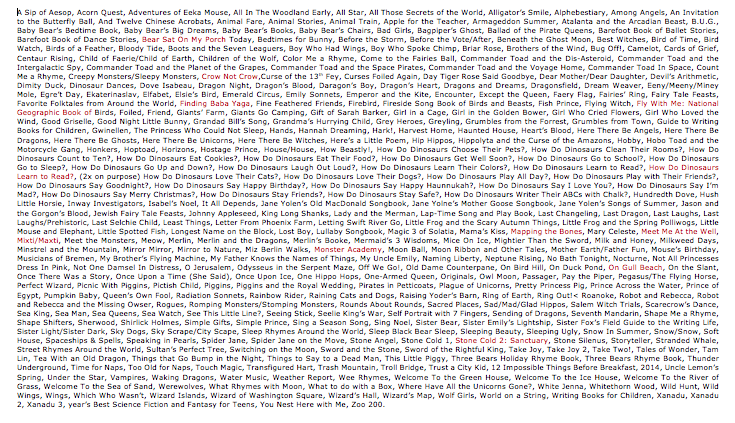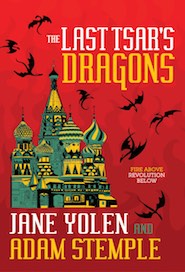It is that most wonderful of days in an author’s life: a book birthday. Today marks the publication date of Jane Yolen’s and my newest novella, The Last Tsar’s Dragons. It is, as the title suggests, a story of the Russian Revolution but with dragons added. Many thanks to all the great people at Tachyon Publications, Elizabeth Harding and the crew at Curtis Brown, and to my writers group, the Wyrdsmiths, who didn’t critique this particular work but whose critiques have made me such a better writer over the past several years that I could see their notes in the margins regardless.
Every book I write teaches me something new. In writing this one, I learned about expanding on an idea you thought you had completed. Luckily, I was writing with my mother, Jane Yolen, who has written literally everything:

The Last Tsar’s Dragons began life as the short story, The Tsar’s Dragons. When JY came to me and said she’d pitched it to Tachyon as a novella, I was initially reticent to try to expand it. Once a story is written, I don’t generally feel the impetus to write it again. But I am very glad we did.
When I describe my writing style, I say that I “plan for plot, write for character, rewrite for theme.” In truth, it’s more like “plan for plot, write for character, rewrite plot to fit characters, add more characters, kill original protagonist, scrap whole thing, plan new plot, kill most characters, rewrite 1000x, contemplate career change, rewrite 1000 more times, finish book, ask writers group what the theme is.”
But that’s a little long for a pithy saying.
However, when looking at the three main ingredients of plot, character, and theme, in a shorter piece, you can often get away with only two of three. The original short story was just Revolution! Dragons! Trotsky and Stalin! Rasputin! Did we mention DRAGONS!?! We had lots of characters and the Russian Revolution was not short of plots. But was there a true theme? Not really. But in expanding the story to a novella, we were able to explore a theme, one that has definitely been on my mind a lot lately: the nature—especially the corruptible nature—of power.
One of the great things about writing fantasy is that when you are using theme or metaphor you can put them in actual physical form. Power, in The Last Tsar’s Dragons, is not an amorphic, invisible force. It is large, winged, and breathes fire on all who oppose it. It is capricious. It is troublesome. It is difficult to wield wisely—or even effectively—and especially difficult to do so morally. And it is wielded by characters so outsized, flawed, corrupt and corruptible, that it would be difficult for a fiction writer to invent them: Nicholas II, Trotsky, Stalin, Rasputin, and more.
Most importantly, since the revolution—however you feel about it—never reached these shores, I now present you with a link to purchase the book:
https://tachyonpublications.com/product/last-tsars-dragons-the/
